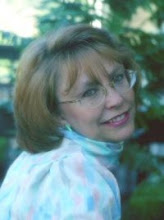I am behind in my reading so I don't have a review at the moment, but I have been saving up recipes for the blog readers. This gives me an opportunity to share some recipes. Yeah!
 Jean-Georges Vongerichten’s Squash on Toast
Jean-Georges Vongerichten’s Squash on Toast
This is amazing, even if you may not think so from the name. Give this a try for a unique twist that is just delicious.
Ingredients
- 1 2 1/2- to 3-pound kabocha or other yellow-fleshed squash, peeled, seeded and cut into pieces 1/8- to 1/4-inch thick. I loved the Butternut squash for this.
- 3/4 cup extra-virgin olive oil
- 1/2 teaspoon dried chile flakes, more to taste
- 3 teaspoons kosher salt
- 1 yellow onion, peeled and thinly sliced
- 1/4 cup apple cider vinegar
- 1/4 cup maple syrup
- 4 slices country bread, 1-inch thick
- 1/2 cup ricotta, goat cheese, feta or mascarpone
- Coarse salt
- 4 tablespoons chopped mint
Preparation
1.
Heat the oven to 450. Combine the squash, 1/4 cup olive oil, chile flakes and 2 teaspoons of salt in a bowl and toss well. Transfer the mixture to a parchment-lined baking sheet and cook, stirring every few minutes, until tender and slightly colored, about 15 minutes or a little longer. Remove from the oven.
2.
Meanwhile, heat another 1/4 cup olive oil over medium-high heat, add the onions and remaining teaspoon salt and cook, stirring frequently, until the onions are well softened and darkening, at least 15 minutes. Add the vinegar and syrup, stir and reduce until syrupy and broken down, again at least 15 minutes or so; the mixture should be jammy.
3.
Combine squash and onions in a bowl and smash with a fork until combined. Taste for seasoning.
4.
Add the remaining oil to a skillet over medium-high heat. Working in batches if necessary, add bread and cook until just golden on both sides, less than 10 minutes total; drain on paper towels. Spread cheese on toasts, then top with the squash-onion mixture. Sprinkle with coarse salt and garnish with mint.
YIELD
4 to 8 servings
Gingerbread Whoopie Pies
1 1/4 teaspoon baking soda
2 rounded teaspoons ground ginger (3 if you like it spicy)
1 teaspoon cinnamon
3/4 teaspoon salt
1/2 cup white sugar
1/2 cup dark molasses
1 egg, beaten
1/3 cup vegetable oil
1/3 cup boiling water
Bake at 350ºF or about 12 minutes
For the filling (makes extra!):
1 package (8 oz) cream cheese, room temperature
2 1/2 cups powdered sugar
1/4 cup butter, room temperature
2 tsp cream or milk
1 teaspoon of vanilla extract
*you can adjust texture by adding more powdered sugar or milk
Flour portioning note: It is critical to weigh the flour for this recipe to work as seen in the video. 10 ounces by weight is about 2 cups by volume, but because flour can become quite compressed in the bag or canister, portioning by cup is not very accurate. If you are not going to weigh, only add about a cup and a half of flour, proceed as shown, and if the batter seems too thin after mixing, add more flour, little by little, until you have the thick batter seen in the video.

Peppermint Dream Cake
Ingredients
3 eggs
1 1/2 cups all-purpose flour
1 1/2 teaspoons baking powder
1/4 teaspoon salt
1 1/2 cups sugar
3/4 cup milk
3 tablespoons butter
1/2 teaspoon peppermint extract
1 tablespoon liquid red food coloring
1 recipe Fluffy White Chocolate Frosting
White chocolate curls
Chopped peppermint candy canes
Directions
1. Allow eggs to stand at room temperature for 30 minutes. Meanwhile, grease bottoms of two 8-inch round baking pans. Line bottoms of pans with waxed paper; grease and lightly flour pans. Set pans aside. In a small bowl stir together flour, baking powder, and salt; set aside.
2. Preheat oven to 350 degrees F. In a medium mixing bowl beat eggs with an electric mixer on high speed about 4 minutes or until thick and lemon colored. Gradually add sugar, beating on medium speed for 4 to 5 minutes or until light and fluffy. Add flour mixture; beat on low to medium speed just until combined.
3. In a small saucepan heat and stir milk and butter over medium heat until butter melts. Add milk mixture and peppermint extract to batter, beating until combined. Divide batter in half. Pour half of the batter into one of the prepared baking pans. Stir red food coloring into the remaining batter. Pour red batter into the other baking pan.
4. Bake for 25 to 30 minutes or until a wooden toothpick inserted near the centers comes out clean. Cool in pans on wire racks for 10 minutes. Remove cakes from pans. Peel off waxed paper. Cool completely on wire racks. Cut each cake layer in half horizontally.
5. To assemble, place a white cake layer on a serving plate. Spread 3/4 cup of the frosting evenly over the cake. Top with a red cake layer; spread evenly with 3/4 cup of the frosting. Top with the remaining white cake layer; spread evenly with 3/4 cup frosting. Top with the red cake layer. Spread frosting over top and sides of cake. Sprinkle white chocolate curls and coarsely chopped candy canes over top of cake. Cover and chill for up to 4 hours. Cover and store any leftover cake in the refrigerator.
Fluffy White Chocolate Frosting
Start to Finish 5 mins
Ingredients
1/2
cup whipping cream
2
tablespoons butter
8
ounces high-quality white chocolate, chopped
1/2
teaspoon peppermint extract
2
cups whipping cream
Directions
1. In a medium saucepan heat and stir whipping cream and butter over medium heat until butter melts. Remove from heat. Add white chocolate (do not stir). Let stand for 5 minutes. Whisk mixture until smooth. Stir in peppermint extract. In a large chilled mixing bowl beat whipping cream with an electric mixer on medium speed until soft peaks form (tips curl). Fold in half of the white chocolate mixture at a time.
Homemade Twinkies
How to make homemade Twinkies. I have not tried this, but wanted to share.
(makes 25 - 2x3 inch cakes)
Cake Ingredients:
4eggs
1/2 cup butter, melted and cooled to lukewarm
1 cup water
1 (5.1 ounce) package instant vanilla pudding mix
1 (18.25 ounce) package yellow cake mix
Filling Ingredients:
1/2 cup butter, room temperature
1 (8 ounce) package cream cheese, room temperature
5 cups confectioners sugar, sifted
1 (8 ounce) container frozen whipped topping, thawed
1 teaspoon vanilla extract
Directions:
1. Preheat an oven to 350 degrees. Grease and flour two 10x15 inch jelly roll pans.
2. Beat the eggs until combined; stir in the melted butter. Add the water, pudding mix, and yellow cake mix, stirring well to combine. The batter will be very thick. Divide the batter between the prepared pans, spreading it evenly.
3. Bake until the cakes spring back when pressed lightly with a finger or a tester comes out clean, 15 to 20 minutes. Cool completely on wire racks.
4. To make the filling, combine the room-temperature butter, cream cheese, and confectioners sugar. Beat until smooth. Stir in the whipped topping and vanilla extract.
5. When the cakes are cool, spread the filling mixture on top of one cake layer. Place the second cake layer on top of the first, and cut into bars. Wrap each bar in plastic wrap and store in the freezer.
ENJOY!








.jpg)

































